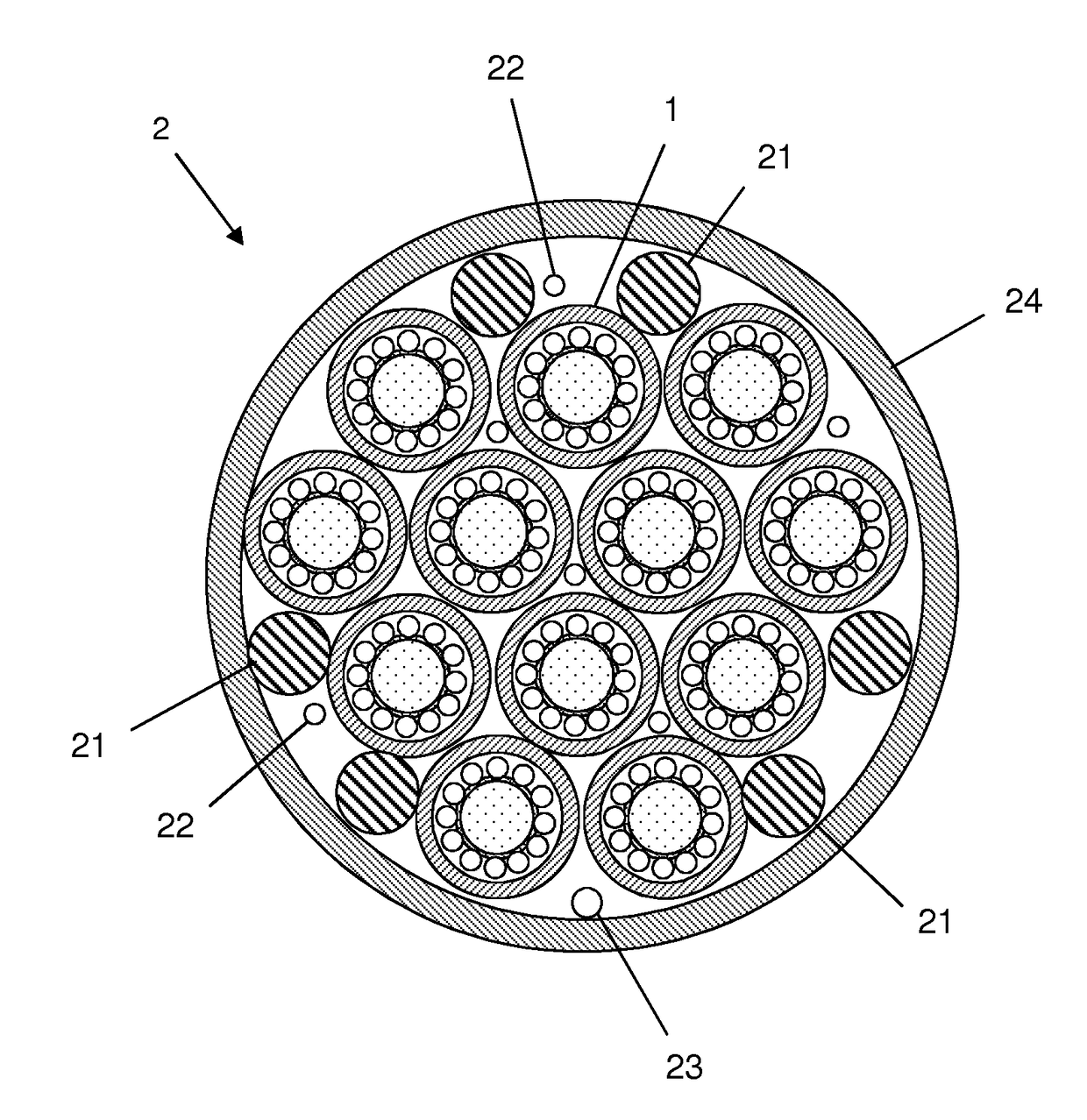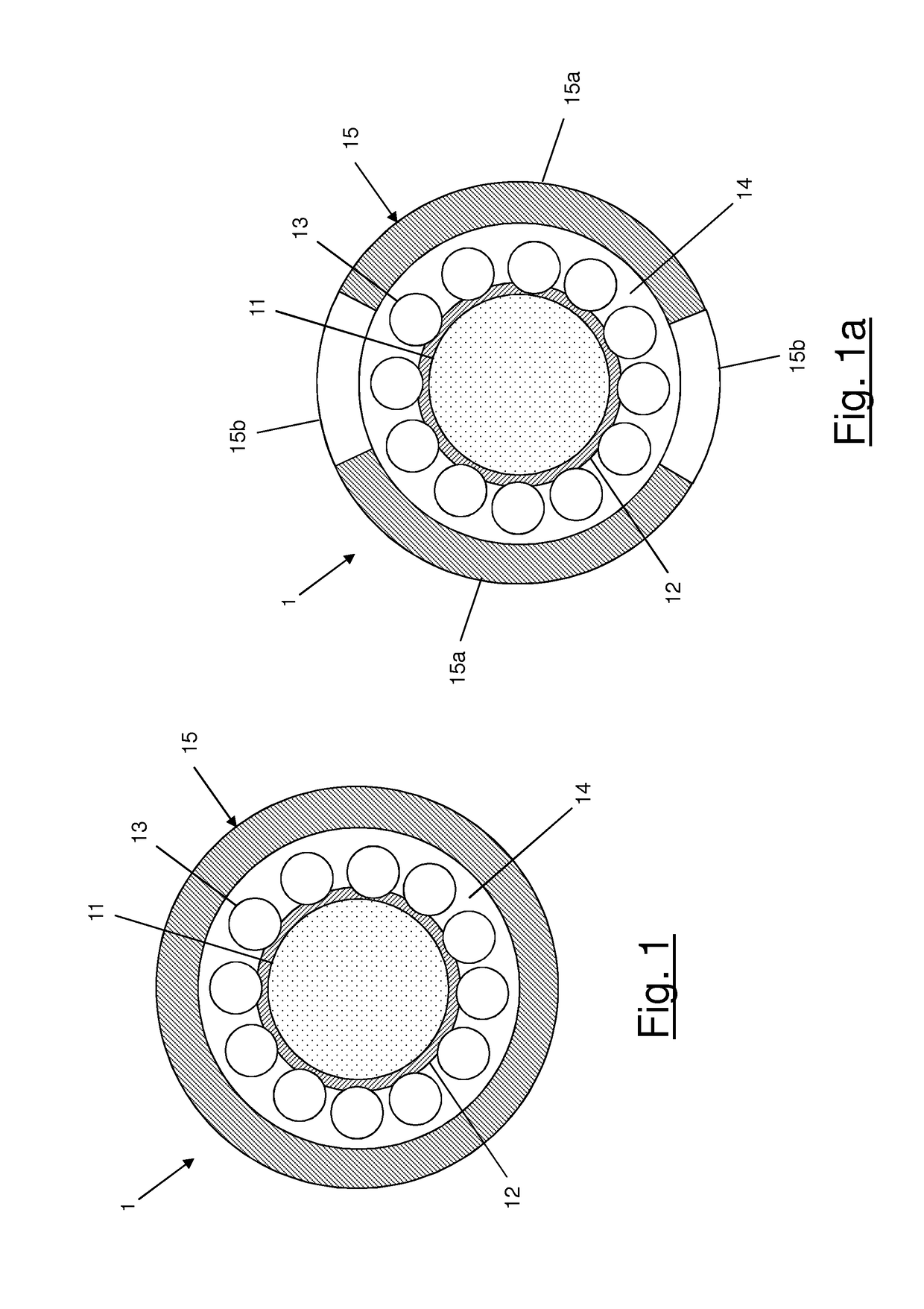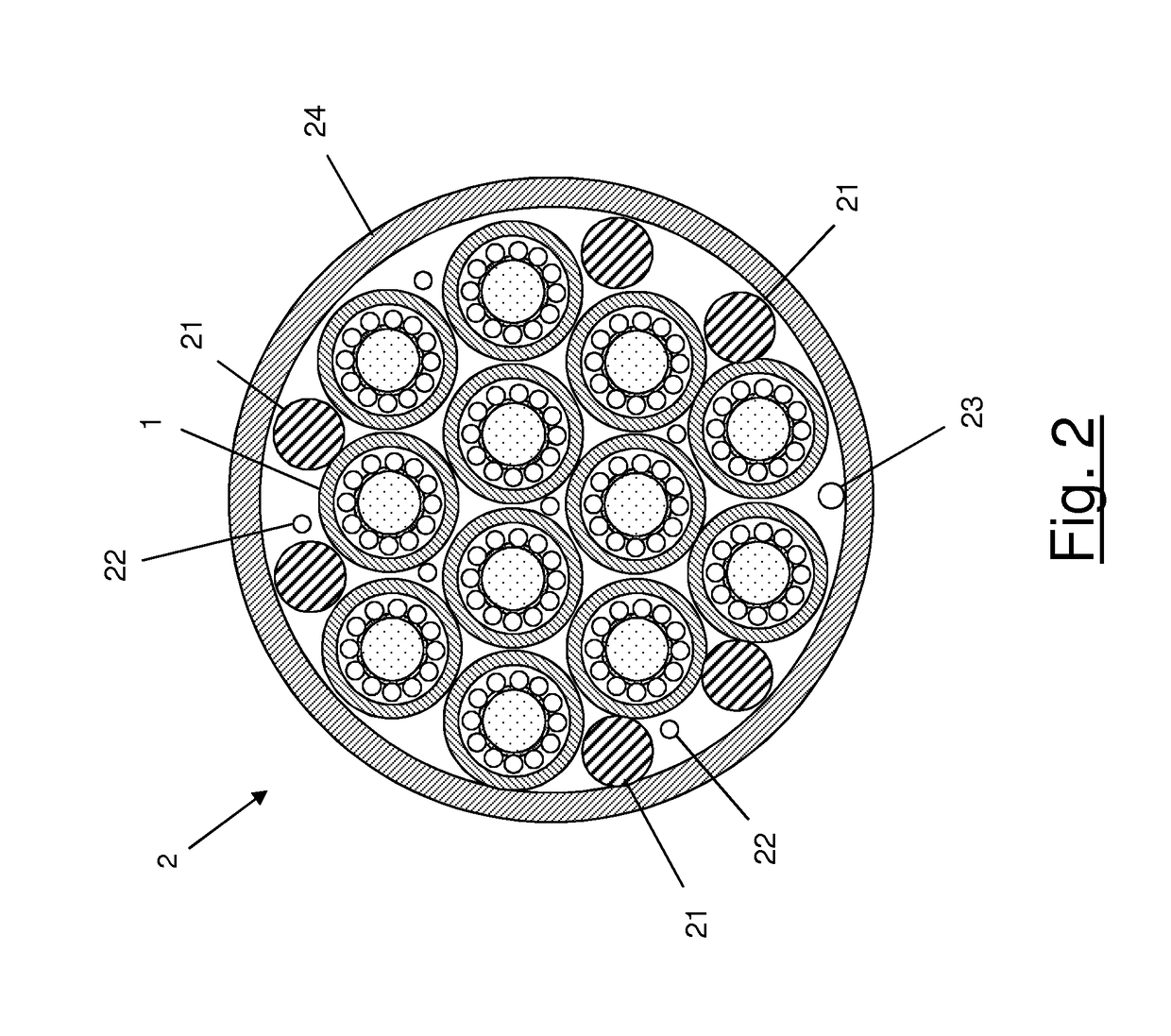Optical cable for terrestrial networks
a terrestrial network and optical cable technology, applied in the field of optical cables, can solve the problems of increasing the overall cross-sectional increasing the load required to install, and reducing the installation length of the cable, so as to reduce the minimum bend diameter of the cable, improve tensile strength, and reduce the size
- Summary
- Abstract
- Description
- Claims
- Application Information
AI Technical Summary
Benefits of technology
Problems solved by technology
Method used
Image
Examples
Embodiment Construction
[0053]For the purpose of the present description and of the appended claims, except where otherwise indicated, all numbers expressing amounts, quantities, percentages, and so forth, are to be understood as being modified in all instances by the term “about”. Also, all ranges include any combination of the maximum and minimum points disclosed and include any intermediate ranges therein, which may or may not be specifically enumerated herein.
[0054]FIG. 1 shows an optical module 1 according to an embodiment of the present invention.
[0055]The optical module 1 comprises a strength member 11, optionally covered by a coating 12.
[0056]The strength member 11 is preferably in the form of a rod. Preferably, the rod is made of a glass reinforced plastic (GRP). More preferably, the rod is made of a GRP having a Young's modulus comprised between 25 MPa and 125 MPa. Even more preferably, the Young's modulus of the GRP is equal to 50 MPa. The strength member 11 has preferably a diameter which is co...
PUM
 Login to View More
Login to View More Abstract
Description
Claims
Application Information
 Login to View More
Login to View More - R&D
- Intellectual Property
- Life Sciences
- Materials
- Tech Scout
- Unparalleled Data Quality
- Higher Quality Content
- 60% Fewer Hallucinations
Browse by: Latest US Patents, China's latest patents, Technical Efficacy Thesaurus, Application Domain, Technology Topic, Popular Technical Reports.
© 2025 PatSnap. All rights reserved.Legal|Privacy policy|Modern Slavery Act Transparency Statement|Sitemap|About US| Contact US: help@patsnap.com



